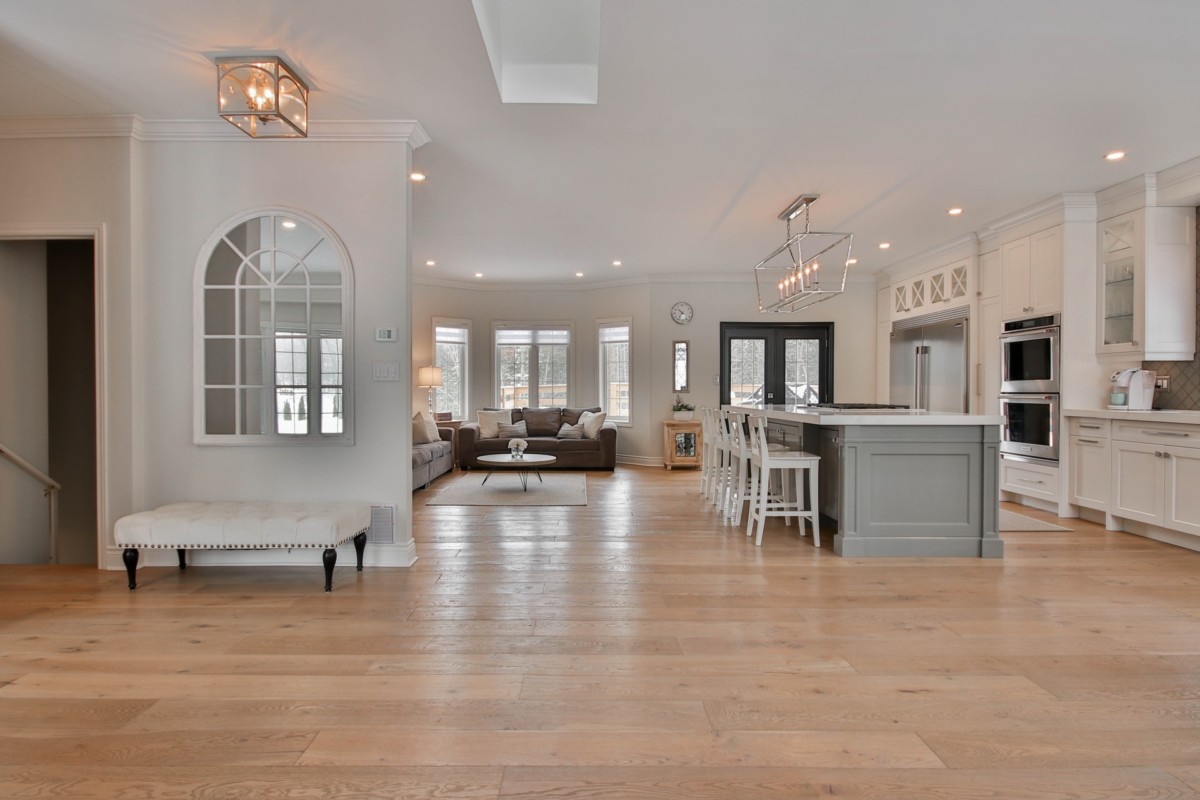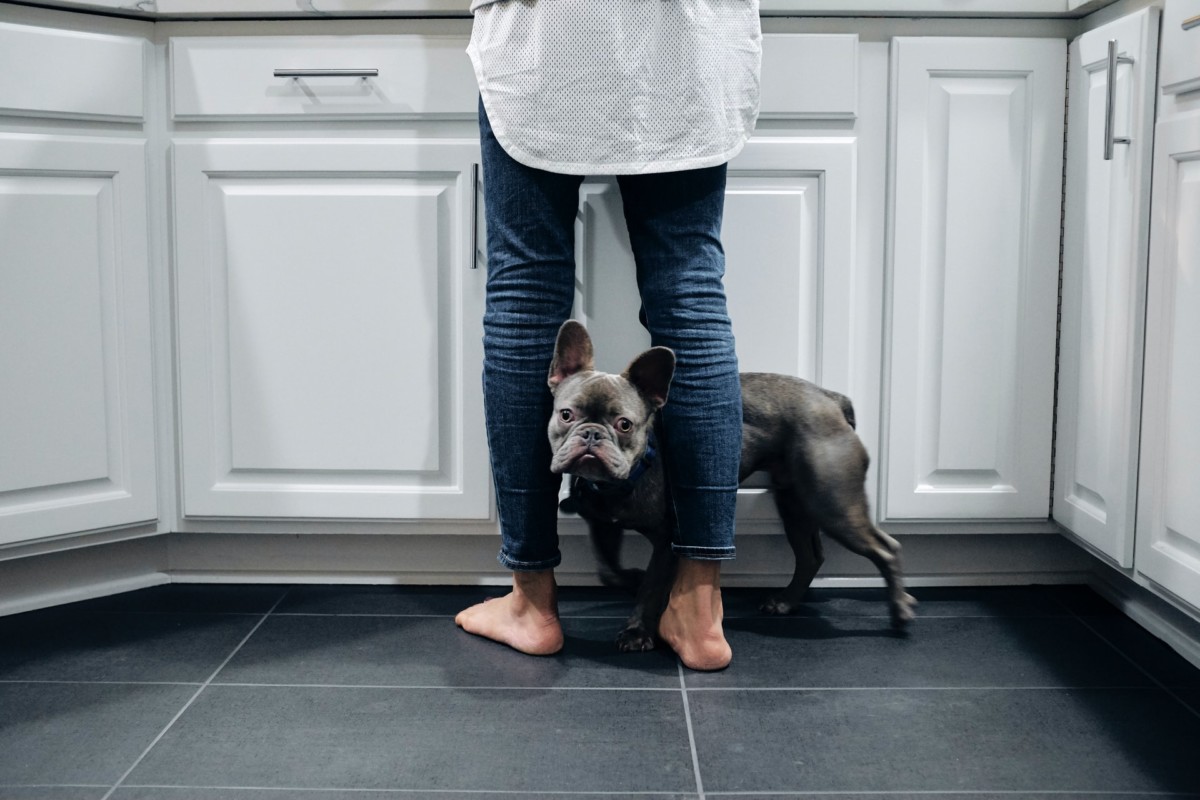Heated Floors: Everything You Need to Know
Picture this – it’s a chilly winter morning and when you step into your kitchen to make yourself a cup of coffee, your bare feet are warmed by the floor beneath you. Sounds nice, doesn’t it? Heated floors are a great alternative to traditional heating methods and they can keep your home, and your toes, warm all winter. So whether you are planning your next home remodel in Cincinnati, OH, or considering buying a home with heated floors in Toronto, CA, here is everything you need to know when deciding if heated flooring is the right choice for your home.

What are heated floors?
Heated floors, also known as radiant heating, are a type of heat system that is located underneath the flooring of the home. With radiant heating, the warmth rises evenly from below via heat radiation, so the temperature of the room is uniform from top to bottom, rather than hot air rising from forced-air systems. Although expensive to install upfront, this efficient way of heating is a great alternative to traditional heating methods and may be worthwhile for your household in the long run.
What are the different types of heated floors and how do they work?
There are two types of radiant floor heating systems: hydronic and electric.
- Hydronic radiant floor heating: With this type of radiant heating system, hot water is generated from a boiler, which is then pumped throughout the floors via tubes. These pipes snake throughout the flooring, radiating thermal energy through materials like tiles, concrete, or wood. Hydronic heating is more efficient than conventional heating and works best at heating larger areas – more typical for whole-house installations rather than room by room. Since hydronic systems require additional parts like a boiler and a pump, the upfront cost of installation can be expensive. However, you can save up to 30% more in operating costs compared to conventional heating systems.
- Electric radiant floor heating: This type of radiant heating system is powered by electric wires located underneath the flooring. Due to the cost of electricity, warming an entire home with electric radiant heating can quickly become expensive. Therefore, this method is most popular for heating individual rooms, such as a bathroom or bedroom, rather than the whole house. Electric installations heat up floors in about 30-60 minutes and can be set to a schedule, heating your floors in the morning at specific hours – or whenever you need it.
How much does it cost to install?
When it comes down to price, hydronic solutions are a more cost-effective alternative in the long run since the operating costs are lower than electric systems. This is because the water conducts and holds heat more efficiently which lowers the operating time. Hydronic heating systems range from $6-$20 averaging at $13 per square foot for professional installation, while electric ranges from $8-$15 averaging at $11 per square foot.
Electric radiant floor systems are cheaper to install because they are composed of electrical wire mats and do not require additional parts that hydronic systems demand. The rate of installation can vary based on a number of factors. For example, if you already have a boiler or a water heater and the floors are already opened, it will be easier for plumbers to install the heating system. If you are remodeling your home and need to open the floors for install, that will add to the cost of installation. If you have some experience wiring and installing pipework, then a DIY radiant floor heating can cut your prices down significantly.

What are the advantages and disadvantages of radiant floor heating?
When contemplating radiant floor heating for your next remodel or home, you’ll want to consider the advantages and disadvantages of radiant floor heating.
Advantages
-
- Silence: When compared to air forced systems, there is little to no noise with radiant floor heating systems. This is because there isn’t a furnace that turns on and/or vents to push the warm air out.
- Non-allergenic: Radiant floor heating systems depend on conduction throughout the home through systems in the floors and walls. Since there are no vents or ducts, there is no dust being circulated that could worsen allergies.
- Energy efficiency: Without ducts and vents required for the warm air to circulate, radiant heating is much more efficient in keeping your home warm. Traditional heating systems can leak warm air through ducts, forcing you to keep the heat on for longer periods of time.
- Consistent heat: Heated floors radiate heat to objects in a room, and because of this, the air temperature stays consistent throughout the areas of your home rather than rising to the ceiling.
- Maintenance: Minimal maintenance is required for radiant flooring and most companies that install this type of heating system offer a minimum of a 25-year warranty.
Disadvantages
- Cost: The costs of radiant floor heating systems overall are dependent on the size of the project and which type of system you opt for. Installation can be expensive when compared to forced air systems – especially if you’re remodeling an existing home. Radiant heating can be made more affordable if installed in only one or two rooms – the bathroom is always a popular choice.
- Installation: If you’re retrofitting an existing home that currently has a forced-air system, the process of installing radiant heating requires removing the existing flooring so the systems can be put in place, all of which will be costly. If you’re building new construction, see if your contractor can work within your budget to install radiant heating throughout your new home.
What types of flooring work best for radiant floor heating systems?
While there are many different types of flooring options compatible with radiant floor heating systems, which one is the most efficient? The most common materials to use with heated flooring are ceramic and stone tile. There are several reasons for this – they conduct heat effectively, and they are a common flooring material in areas where people are most often barefoot. Other popular flooring materials that can be used include vinyl and linoleum, wood, or carpeting. However, keep in mind that if any flooring material has too high of a degree of insulation, your heating system will be less effective.
So whether you are ready to start your next remodeling project, or looking for houses with heated flooring as a home feature, consider everything that goes into radiant heating so you can choose the best option that fits your needs and keeps you warm and cozy all year round.
The post Heated Floors: Everything You Need to Know appeared first on Redfin | Real Estate Tips for Home Buying, Selling & More.




